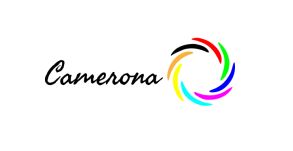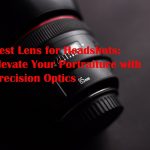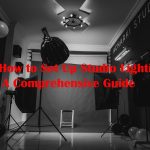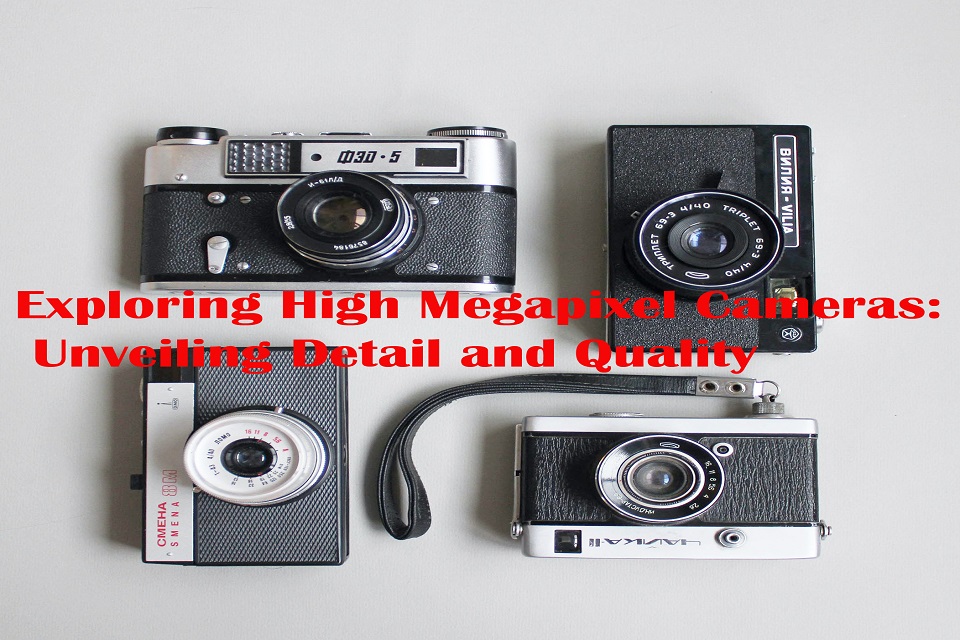
Exploring High Megapixel Cameras: Unveiling Detail and Quality
In the dynamic world of photography, technological advancements continually reshape the landscape, offering photographers unprecedented tools to capture the beauty and intricacies of the world around us. One such innovation is the rise of high-megapixel cameras, which have redefined our expectations of image quality and detail. In this article, we delve into the realm of high-megapixel cameras, exploring their capabilities, benefits, and considerations, all while shedding light on some remarkable examples that have left an indelible mark on the industry.
Table of Contents
Introduction: The Quest for Detail
In an age driven by visual storytelling, photographers and enthusiasts seek tools that enable them to convey the most intricate details of their subjects. High-megapixel cameras have emerged as the embodiment of this quest, offering the potential to capture images with an unprecedented level of detail, whether it’s the textures of a landscape, the delicate features of a portrait, or the intricate architecture of a cityscape.
High Megapixel Cameras: A Closer Look
Key Advantages
At the heart of high-megapixel cameras lies their ability to capture images with astonishing detail. Here are some key advantages:
- Unrivaled Resolution: High megapixel counts, such as 61 megapixels or more, provide an abundance of pixels, allowing for incredibly detailed images that retain their quality even when enlarged or cropped.
- Intricate Textures: Whether it’s the fine textures of a flower petal or the intricate patterns of a building facade, high-megapixel cameras excel in preserving these nuances.
- Fine Art and Printing: Photographers who specialize in fine art or large-scale printing benefit from the heightened resolution, enabling them to create prints that captivate viewers with their clarity.
Factors to Consider
While high-megapixel cameras offer exceptional benefits, several factors deserve consideration:
- File Sizes: High resolution translates to larger file sizes, which can impact storage and post-processing workflows.
- Lens Compatibility: The camera’s resolution demands high-quality lenses that can fully resolve the level of detail captured by the sensor.
- Processing Power: Editing high-megapixel images requires robust processing power and memory to ensure smooth post-processing.
Examples of High Megapixel Cameras
Phase One XF IQ4 150MP (150 MP)
The Phase One XF IQ4 150MP is a flagship medium format camera that pushes the boundaries of image quality and resolution. Built for discerning professionals who demand the utmost in detail and clarity, this camera is a marvel of engineering that excels in studio and landscape photography.
Key Features:
- 150-Megapixel Sensor: The standout feature of the XF IQ4 is its staggering 150-megapixel sensor. With over 14,000 pixels horizontally and vertically, this sensor captures an unparalleled level of detail that allows for intricate enlargements and extensive cropping while maintaining remarkable quality.
- Medium Format Excellence: Medium format cameras are revered for their ability to capture images with exceptional dynamic range, tonal gradation, and color accuracy. The XF IQ4 leverages the medium format advantage to deliver images that stand out with breathtaking depth and realism.
- IQ4 Digital Back: The IQ4 digital back is the heart of this camera system. With advanced image processing capabilities, it ensures optimal image quality and provides flexibility in capturing RAW files in multiple formats.
- Capture One Integration: Phase One’s Capture One software seamlessly integrates with the XF IQ4, providing a powerful toolset for tethered shooting, image organization, and advanced RAW processing.

Pros:
- Unrivaled Resolution: The 150-megapixel sensor translates into extraordinary resolution, capturing every nuance and detail of the scene. This is particularly beneficial for large-scale prints and situations where fine details matter.
- Exceptional Dynamic Range: The XF IQ4’s medium format sensor excels in retaining details in both highlight and shadow areas, resulting in images with stunning dynamic range and minimal noise.
- Color Accuracy: The camera’s color reproduction is meticulous, making it an ideal choice for professional photographers who require precise color representation for commercial work.
- Flexibility in Post-Processing: The abundance of pixels provides ample room for cropping and reframing in post-processing without sacrificing image quality.
- Versatile Applications: While the XF IQ4 is renowned for landscape photography, its capabilities extend to fashion, architecture, and studio work, where high resolution and exceptional image quality are paramount.
Cons:
- High Cost: As a premium offering, the XF IQ4 150MP comes with a substantial price tag, making it an investment primarily for dedicated professionals.
- Size and Weight: Medium format systems tend to be bulkier and heavier than smaller format counterparts. This can be a consideration for photographers who prioritize portability.
- Handling and Workflow: While the XF IQ4 offers remarkable image quality, handling the larger files and adjusting to the medium format workflow may require adjustments for photographers accustomed to smaller formats.
- Limited Low-Light Performance: Despite its impressive sensor, the XF IQ4 may not perform as well in low-light conditions compared to some smaller sensor counterparts.
Sony A7R IV (61 MP)
The Sony A7R IV stands as a remarkable example of cutting-edge technology in the world of full-frame mirrorless cameras. With impressive resolution, advanced autofocus capabilities, and versatile features, the A7R IV caters to photographers who seek exceptional detail and image quality across various genres.
Key Features:
- 61-Megapixel Sensor: The A7R IV boasts a 61-megapixel back-illuminated sensor, providing an abundance of detail and resolution for capturing images with stunning clarity.
- Real-time Eye AF: Sony’s Real-time Eye autofocus technology ensures precise focus on subjects’ eyes, whether it’s humans or animals, enabling portrait and wildlife photographers to capture captivating shots.
- Enhanced Viewfinder and LCD: The camera features a high-resolution OLED electronic viewfinder and a tilting touchscreen LCD for composing shots from various angles with ease.
- 4K Video Capabilities: Beyond photography, the A7R IV excels in video recording, offering 4K resolution with full pixel readout and no pixel binning for exceptional detail.
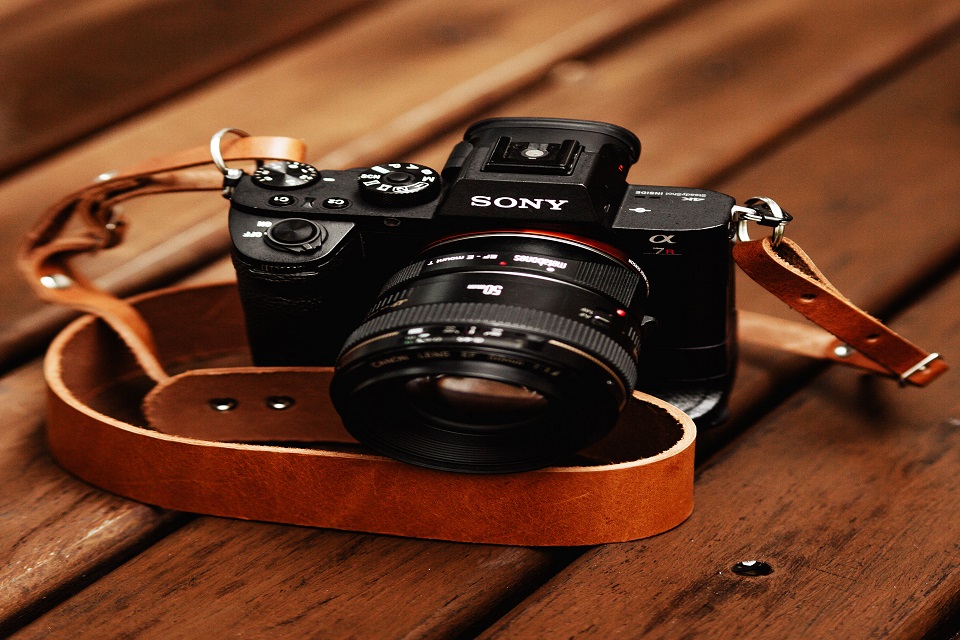
Pros:
- High Resolution: The 61-megapixel sensor provides an impressive level of detail, making the A7R IV suitable for capturing intricate textures, landscapes, and fine art photography.
- Real-time Eye AF: The advanced autofocus system ensures accurate focus on subjects’ eyes, enhancing portrait and wildlife photography.
- Versatile Shooting Modes: With a wide range of shooting modes and customizable settings, the A7R IV adapts to various photography styles and scenarios.
- Excellent Low-Light Performance: The back-illuminated sensor design contributes to improved low-light performance and reduced noise, allowing for high-quality images even in challenging lighting conditions.
- Compact and Lightweight: Compared to other high-resolution cameras, the A7R IV’s compact and lightweight design adds to its portability and usability.
Cons:
- Large File Sizes: The high-resolution images produced by the A7R IV result in larger file sizes, which may require more storage space and processing power.
- Battery Life: The demanding sensor and features can lead to a relatively shorter battery life compared to cameras with lower resolution.
- Advanced Features Learning Curve: While the camera offers advanced features, mastering the various settings and customization options may require a learning curve for some users.
- Limited Buffer for Continuous Shooting: The large file sizes can impact the buffer capacity, limiting the number of continuous shots in burst mode.
Hasselblad H6D-100c (100 MP)
The Hasselblad H6D-100c is a masterpiece in the realm of high-megapixel cameras, designed to deliver exceptional image quality and precision. As part of Hasselblad’s esteemed lineup, the H6D-100c holds its place as a top choice for professional photographers who demand the utmost in detail, dynamic range, and color accuracy.
Key Features:
- 100-Megapixel CMOS Sensor: At the heart of the H6D-100c lies a 100-megapixel CMOS sensor, enabling the camera to capture images with astounding resolution and intricate detail.
- True Focus II Autofocus: The camera incorporates True Focus II technology, ensuring accurate and consistent focus, particularly when shooting at wide apertures or in shallow depths of the field.
- 16-bit Color Depth: The camera offers an impressive 16-bit color depth, allowing for an extensive range of colors and smooth transitions in tones, contributing to lifelike images.
- Dual Card Slots: The H6D-100c features dual card slots, supporting both CFast and SD card formats, providing photographers with versatile storage options.
- Medium Format Advantage: The larger sensor size of medium format systems like the H6D-100c contributes to superior image quality, especially in terms of dynamic range and low-light performance.

Pros:
- Exceptional Image Quality: The 100-megapixel sensor ensures remarkable detail and clarity, making the H6D-100c a go-to choice for studio, portrait, and fine art photographers.
- Dynamic Range: The medium format sensor allows for an extensive dynamic range, capturing a wide range of tones and details in both highlights and shadows.
- Color Accuracy: Hasselblad is renowned for its color science, and the H6D-100c continues this tradition, producing images with accurate and vibrant colors.
- Build Quality: The camera’s robust build and attention to detail reflect Hasselblad’s commitment to quality, ensuring durability even in demanding shooting conditions.
- Versatile Lens Options: The H6D-100c supports a range of Hasselblad HC and HCD lenses, offering photographers flexibility in capturing diverse subjects.
Cons:
- Size and Weight: Medium format cameras like the H6D-100c tend to be bulkier and heavier than their smaller counterparts, which can impact portability.
- Price Point: The H6D-100c is positioned in the professional market and comes with a higher price tag, making it an investment for serious photographers.
- Learning Curve: Operating medium format cameras might require a learning curve, especially for photographers transitioning from smaller formats.
- Limited Autofocus Points: While the True Focus II technology assists with accurate focus, the camera’s autofocus points are fewer compared to some advanced full-frame counterparts.
Phase One XT (150 MP)
The Phase One XT (150 MP) is a testament to the art and science of photography, designed to meet the demands of landscape photographers who crave nothing less than perfection in every frame. This medium format marvel redefines what’s achievable in terms of resolution, capturing landscapes with a level of detail that’s both awe-inspiring and technically profound.
Key Features:
- 150-Megapixel IQ4 Digital Back: The Phase One XT boasts a staggering 150-megapixel IQ4 digital back, providing photographers with an extraordinary level of resolution.
- Specialized for Landscapes: The camera is purpose-built for landscape photography, featuring technologies that complement the nuances of outdoor scenes.
- Lightweight and Portable: Unlike traditional medium format systems, the Phase One XT offers a lightweight and portable design, ensuring ease of use even in challenging environments.
- Precision Lenses: The camera is paired with Schneider Kreuznach lenses, known for their optical excellence and ability to resolve high levels of detail.
- User-Friendly Interface: The intuitive touchscreen interface of the IQ4 digital back simplifies control and settings, allowing photographers to focus on capturing the perfect shot.

Pros:
- Unmatched Resolution: The 150-megapixel sensor captures images with a level of detail that’s ideal for large-scale prints and artistic projects.
- Dedicated to Landscapes: The camera’s design and features are optimized for landscape photography, enabling photographers to capture the natural world in breathtaking detail.
- Compact Design: Unlike traditional medium format systems, the Phase One XT is surprisingly compact and lightweight, making it suitable for photographers who are constantly on the move.
- Schneider Kreuznach Lenses: The camera is equipped with top-tier Schneider Kreuznach lenses, known for their sharpness and ability to deliver edge-to-edge clarity.
- Versatility and Precision: The touchscreen interface of the IQ4 digital back provides a user-friendly experience, allowing photographers to fine-tune settings with precision.
Cons:
- High Cost: The Phase One XT (150 MP) is an investment, positioned at the higher end of the price spectrum due to its exceptional features and image quality.
- Limited Autofocus: While the camera is optimized for landscapes, its autofocus capabilities might be limited compared to some full-frame counterparts.
- Medium Format Learning Curve: Photographers transitioning from smaller formats might experience a learning curve when working with a medium format system like the Phase One XT.
Pentax 645Z (51.4 MP)
The Pentax 645Z (51.4 MP) is a powerful medium format camera that combines exceptional image quality with a versatile design, catering to photographers who seek both high resolution and artistic flexibility. With its impressive sensor and thoughtful features, the Pentax 645Z stands as a reliable choice for professionals and enthusiasts who desire superior detail and dynamic range.
Key Features:
- 51.4-Megapixel CMOS Sensor: The heart of the Pentax 645Z is its 51.4-megapixel CMOS sensor, capturing images with remarkable detail and clarity.
- Weather-Sealed Construction: The camera features weather-sealed construction, making it suitable for various shooting conditions, including challenging outdoor environments.
- 3.2-inch Tilting LCD: The tilting LCD screen enhances shooting versatility, allowing for creative compositions and comfortable viewing from different angles.
- High-Quality Optics: The Pentax 645Z is compatible with an array of high-quality Pentax 645 lenses, ensuring exceptional optical performance.
- In-Camera Shake Reduction: The built-in shake reduction mechanism minimizes the impact of camera shake, resulting in sharper images, even in handheld situations.
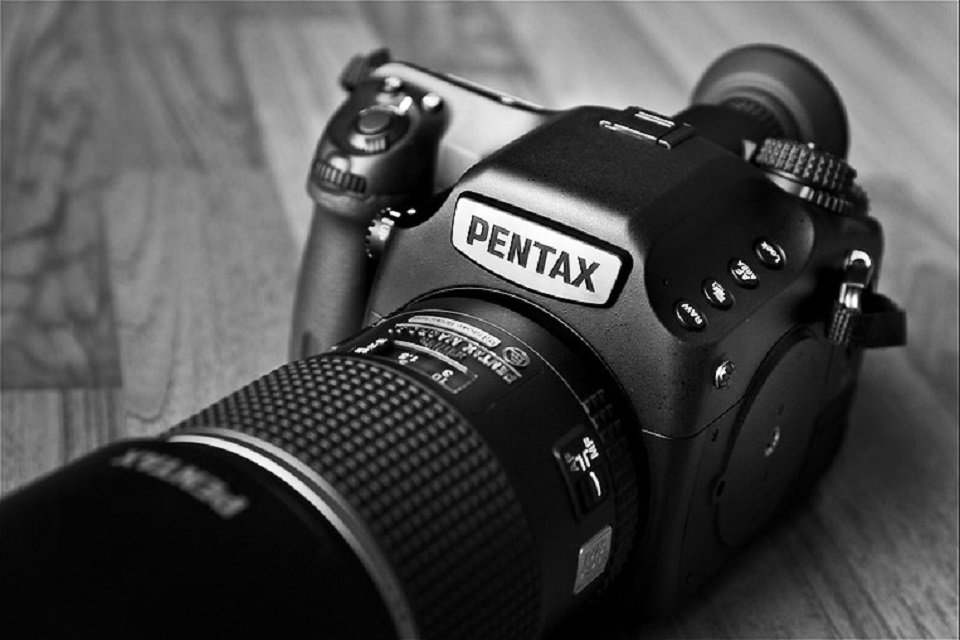
Pros:
- High Resolution: The 51.4-megapixel sensor provides ample resolution for capturing intricate details and producing large prints with exceptional clarity.
- Weather Resistant: The camera’s weather-sealed construction protects it from dust, moisture, and cold temperatures, making it suitable for outdoor and challenging environments.
- Versatile LCD: The tilting LCD screen adds a layer of flexibility to composition, enabling photographers to explore creative angles and perspectives.
- Medium Format Advantages: The larger sensor size of medium format systems like the Pentax 645Z contributes to enhanced dynamic range and low-light performance.
- User-Friendly Controls: The camera’s interface and controls are designed for ease of use, accommodating both experienced photographers and those new to medium format.
Cons:
- Bulkier Build: Medium format cameras, including the Pentax 645Z, tend to be bulkier and heavier, impacting portability compared to smaller formats.
- Higher Cost: While the Pentax 645Z offers exceptional image quality, its medium format capabilities come at a higher price point.
- Limited Autofocus Points: The camera’s autofocus system might have fewer points compared to some advanced full-frame counterparts.
Sigma fp L (61 MP)
The Sigma fp L is a marvel of compact design and exceptional imaging capabilities, inviting photographers to embrace the power of high resolution within a portable package. With its 61-megapixel sensor, the Sigma fp L redefines what’s achievable in terms of image quality, making it a compelling choice for both photographers and videographers who demand excellence.
Key Features:
- 61-Megapixel Full-Frame Sensor: The Sigma fp L is equipped with a 61-megapixel full-frame sensor, delivering stunning image quality and intricate detail.
- Versatile Shooting Modes: The camera offers a range of shooting modes, including still photography, high-resolution mode, and impressive video capabilities.
- L-Mount Compatibility: The Sigma fp L is compatible with L-Mount lenses, expanding lens options and offering compatibility with a variety of optics.
- Cinema Camera Capabilities: With its robust video features, the Sigma fp L serves as both a powerful still camera and a versatile cinema camera.
- Compact and Lightweight: The camera’s compact design ensures portability, allowing photographers to carry a high-resolution powerhouse wherever their creativity takes them.
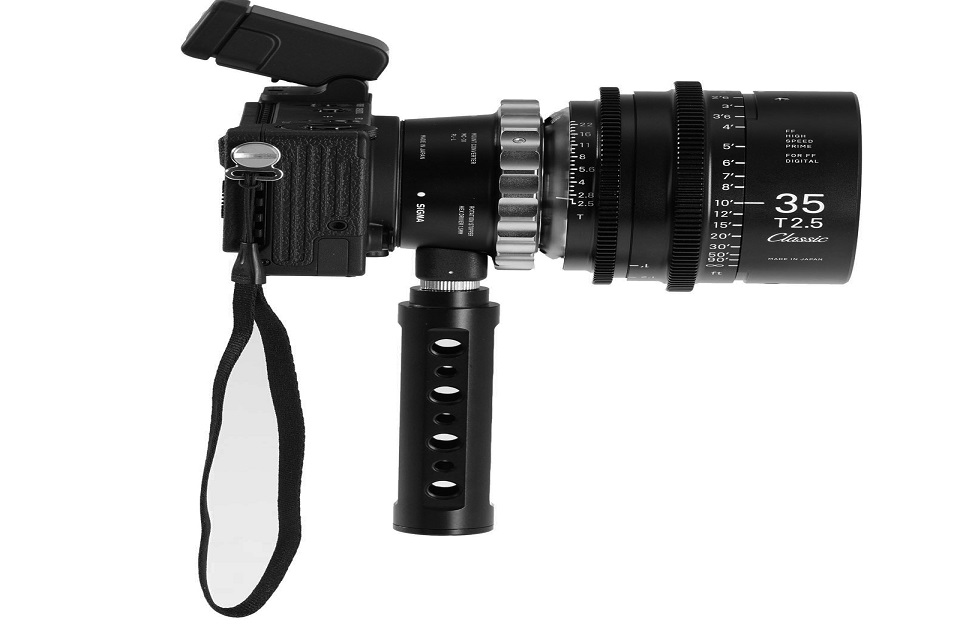
Pros:
- High Resolution: The 61-megapixel sensor captures images with exceptional detail and clarity, making it suitable for both still photography and video.
- Versatile Shooting Modes: The Sigma fp L offers a range of shooting modes, catering to photographers who want to explore different creative avenues.
- L-Mount Versatility: The camera’s L-Mount compatibility opens up a world of lens options, allowing photographers to choose from a diverse range of optics.
- Cinematic Features: Videographers will appreciate the camera’s robust video capabilities, which make it suitable for a wide range of video projects.
- Compact Design: The compact and lightweight design of the Sigma fp L ensures that photographers can carry a high-resolution camera without the burden of excessive weight.
Cons:
- Limited Native Lens Options: While the L-Mount compatibility offers versatility, the range of native lenses might be more limited compared to other systems.
- Learning Curve for Video: While the camera offers impressive video features, videographers transitioning from dedicated cinema cameras might need time to adapt.
- Battery Life: The compact size of the camera can result in shorter battery life compared to larger models.
High Megapixels vs. Overall Image Quality
In the world of digital photography, the debate between high megapixels and overall image quality is an ongoing discussion. While it’s tempting to believe that more megapixels automatically lead to better image quality, the reality is a bit more nuanced. Let’s delve into the intricacies of this relationship and understand how megapixels impact the final results.
The Role of Megapixels
Megapixels refer to the number of pixels a camera’s sensor can capture. Each pixel contributes a single point of color information to an image. When combined, these points create the intricate details, colors, and textures that form a photograph. A higher megapixel count implies more pixels in the image, which can potentially capture finer details.
Resolution and Detail
The primary advantage of high megapixel counts is the ability to capture intricate details with greater precision. This is particularly valuable in scenarios like landscape and macro photography, where the smallest elements can significantly enhance the composition. However, it’s crucial to remember that while more megapixels can capture finer details, the actual impact is often dependent on other factors like lens quality and the overall image-processing pipeline.
Impact on Image Quality
While high megapixels can contribute to image sharpness and detail, they are not the sole determinants of overall image quality. The following factors also play pivotal roles:
- Sensor Size: The physical dimensions of the camera’s sensor matter. Larger sensors tend to offer better low-light performance and dynamic range, which are essential for producing high-quality images.
- Lens Quality: The lens used to capture an image is equally crucial. A high-resolution sensor demands a lens that can resolve the level of detail the sensor captures.
- Image Processing: How the camera processes the captured data, including noise reduction, color accuracy, and dynamic range adjustments, significantly affects the final image quality.
- Lighting and Composition: The way light interacts with the subject, along with the composition and framing of the shot, greatly influences the visual impact of the image.
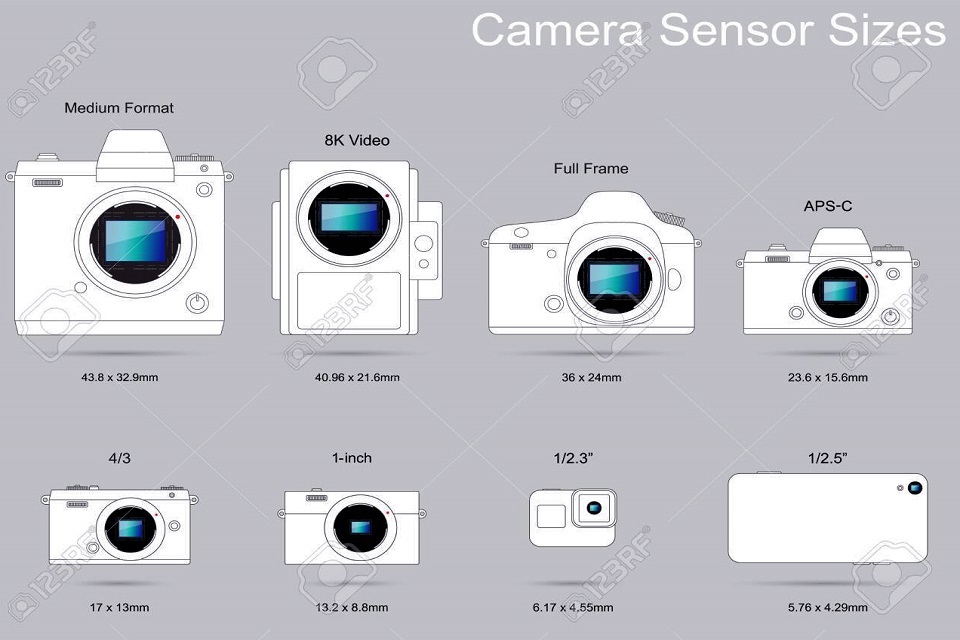
Practical Considerations
While high megapixel counts are beneficial in certain scenarios, they might not be necessary for all types of photography. For example:
- Casual Photography: If you’re primarily sharing images online or creating small prints, extremely high megapixels may not offer noticeable benefits.
- Action Photography: In fast-paced scenarios, other factors like quick autofocus and burst speed might take precedence over ultra-high resolution.
- File Size and Processing: Higher megapixel images produce larger file sizes, which can strain storage and slow down post-processing workflows.
Striking a Balance
In the end, the key is to strike a balance between megapixels and other factors that contribute to overall image quality. Camera manufacturers recognize this and often focus on optimizing sensor design, image processing algorithms, and lens compatibility to deliver a holistic package.
Ultimately, the decision to prioritize high megapixels or other aspects of image quality depends on the photographer’s intended use and creative vision. Understanding the intricacies of this relationship empowers photographers to make informed choices that align with their artistic goals.
The Future of Photography: What Lies Ahead
As technology advances, we can expect innovations that address challenges associated with high megapixel counts. Improved noise reduction, enhanced dynamic range, and more efficient file compression are just a few areas that could see development, shaping the future of high-resolution photography.
Conclusion: Embracing the Era of High Megapixel Photography
The debate over megapixels and image quality will persist, but the possibilities offered by high-megapixel cameras are undeniable. Whether capturing breathtaking landscapes, exquisite portraits, or intricate details, these cameras empower photographers to convey their artistic vision with unprecedented precision and clarity.
In the ever-evolving world of photography, high-megapixel cameras are at the forefront of pushing creative boundaries. They enable photographers to capture moments with unparalleled detail, preserving the essence of each subject in a way that was once only imaginable. As technology continues to advance, it’s an exciting time for photographers to explore the intersection of artistry and innovation.
FAQs
- Are high megapixels the only factor determining image quality?
- No, while high megapixels contribute to capturing finer details, other factors like sensor size, lens quality, image processing, and composition also play crucial roles in overall image quality.
- Should I always prioritize high megapixels for better images?
- Not necessarily. The choice of megapixels depends on your intended use. High megapixels are beneficial for large prints and intricate details, but lower megapixels may be sufficient for online sharing and smaller prints.
- Can high megapixels compensate for a lower-quality lens?
- High megapixels can reveal the limitations of a lower-quality lens, so pairing a high-resolution sensor with a quality lens is essential for maximizing image potential.
- Are there scenarios where lower megapixels are preferable?
- Yes, scenarios like sports and action photography may benefit from lower megapixels, as they often require faster burst rates and quicker autofocus over ultra-high resolution.
- How can photographers strike the right balance between megapixels and other factors?
- Finding the right balance involves considering your photography style and needs. Assess factors like print size, editing demands, and subject matter to determine the optimal megapixel count for your work.
